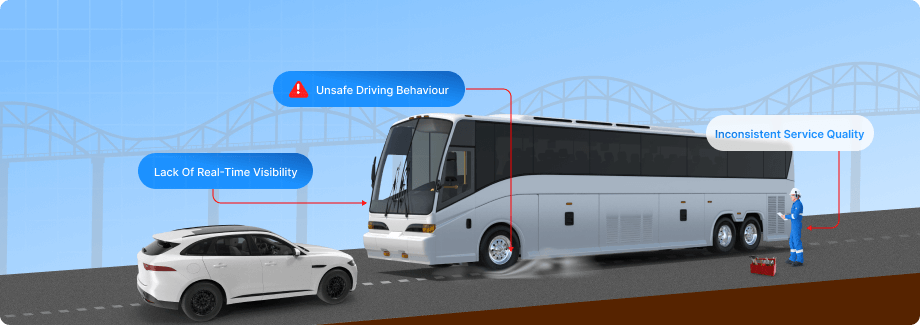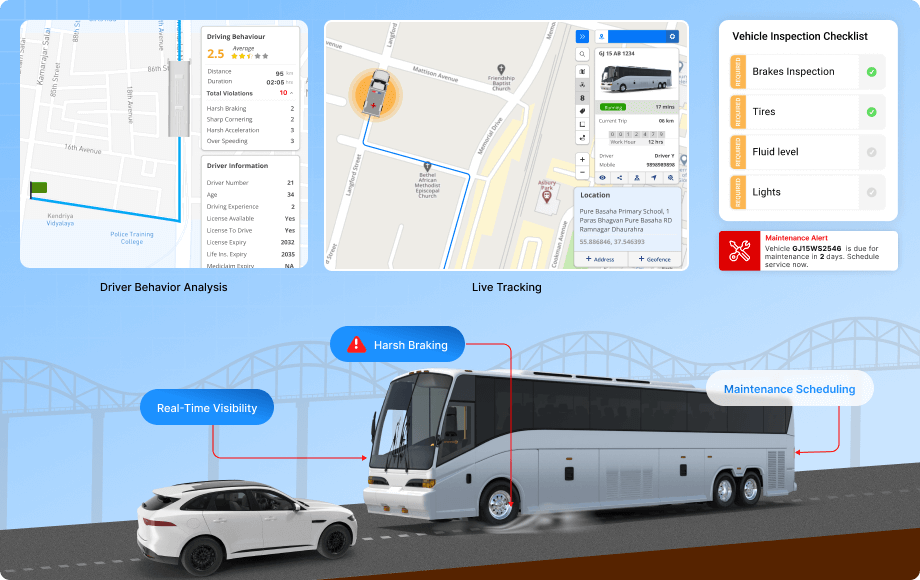Tourism contributes about 12% to Thailand’s GDP and supports over 20% of total employment. In 2025, Thailand recorded around 36–39 million international visitors, driving strong demand for safe and reliable transport. Managing shuttle vans, tour buses, and private taxis across cities and islands is challenging without proper visibility. To overcome these gaps, travel operators are adopting telematics solutions to monitor driver behaviour, prevent accidents, and ensure smooth, well-coordinated journeys.
Empowering Thailand’s Tourist Transport Fleets for Driver Safety
Introduction
Challenges
- Unsafe driving behavior: Speeding, harsh braking, or fatigue-related incidents risk passenger safety and operator reputation.
- Lack of real-time visibility: Fleet owners struggle to track driver activity, route adherence, or vehicle location during tours.
- Delayed response to emergencies: Absence of live alerts prevents quick intervention in case of accidents or route deviations.
- Manual monitoring: Tour operators depend on phone communication for trip updates, leading to miscommunication and delays.
- Inconsistent service quality: Without performance data, evaluating driver reliability and customer experience becomes difficult.
Solution with Trakzee
- Live tracking and driver monitoring: Enables managers to monitor every driver and vehicle in real time for complete operational visibility.
- Driver behavior analysis: Identifies risky actions such as harsh braking, sudden acceleration, or prolonged idling – encouraging safer driving habits.
- Instant alerts and notifications: Sends immediate updates for overspeeding, unauthorized stops, or route deviations to ensure passenger safety.
- Trip history and playback: Provides verifiable route data for audits, dispute resolution, and service verification.
- Maintenance scheduling: Prevents on-tour breakdowns by tracking odometer readings and vehicle health.
Results Achieved
- Up to 45% reduction in unsafe driving incidents through proactive driver performance tracking.
- 25% increase in on-time service delivery due to route monitoring and automated alerts.
- 15–20% fuel savings by reducing idling and promoting efficient driving behavior.
- Improved passenger trust and satisfaction through transparent, safety-focused operations.
- Lower maintenance costs and downtime achieved through predictive maintenance tools.
Let’s Move Forward, Together
Share your details and we’ll guide you from here.




